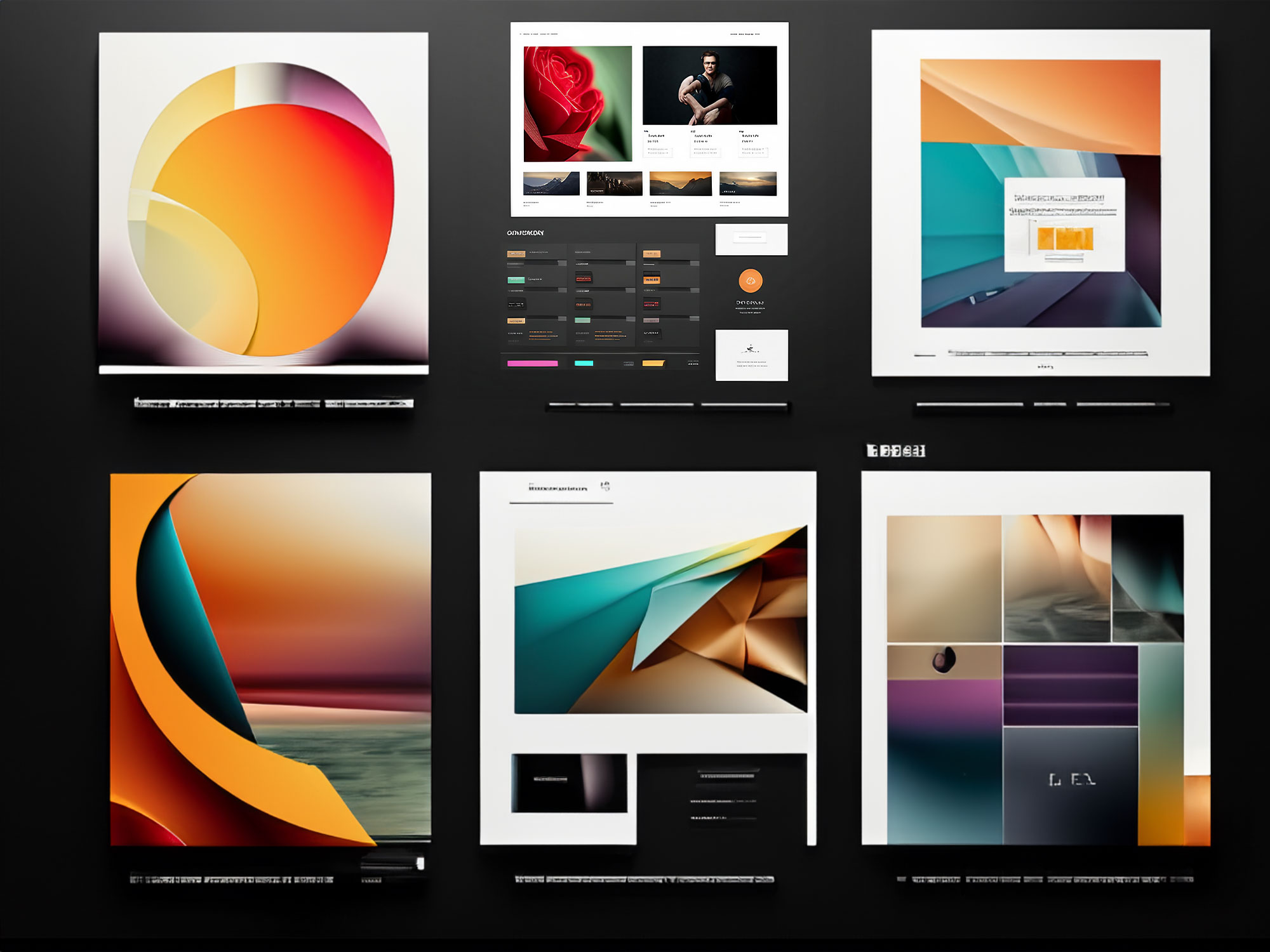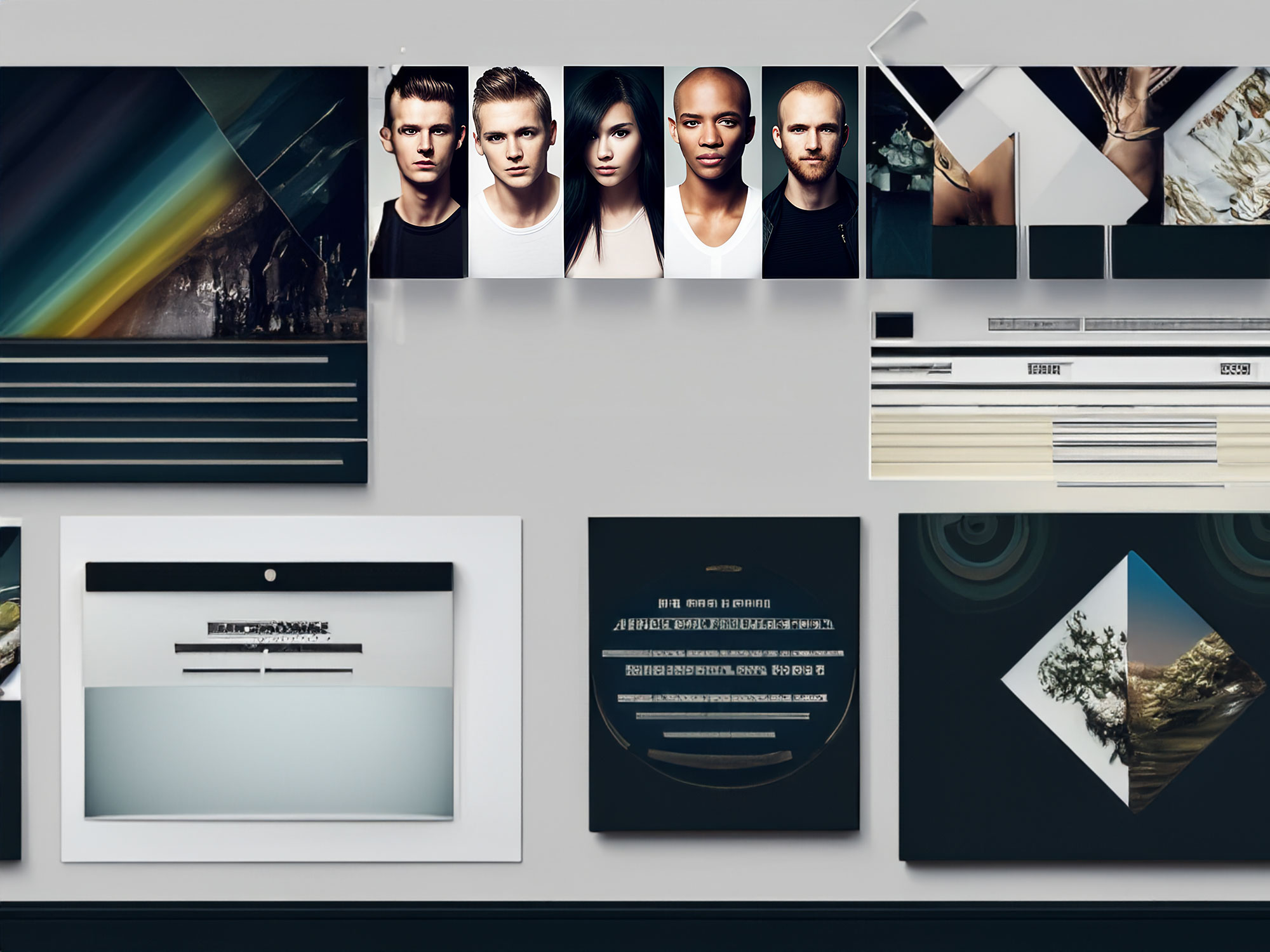I understand the importance of having a clear portfolio. It can help you land more clients and higher-paying projects. Your portfolio serves as a reflection of your skills and experience, so you want it to be a true representation of your capabilities. In this post, I’ll be sharing some practical tips on how to ensure that your portfolio stands out from the rest.
The Importance of Quality Images and Concise Text
Incorporating high-quality images and concise text is crucial in demonstrating your capabilities to potential clients. Your portfolio should provide a comprehensive overview of your skills and showcase your best work. It is essential to lay out your portfolio in a way that is easy to navigate, allowing potential clients to view your work with ease. Avoid using too many images or text that is hard to read, as it can be overwhelming for potential clients. Utilize your best work, and make sure that the images are high-resolution and with modern format and compression for fast loading on a mobile device.

Examples of Quality Visuals in My Portfolio
- Brand Identity Project for XYZ Company: This project showcases my expertise in creating cohesive brand identities. It includes the logo design, color palette, typography, and a guide on how to use these elements consistently across different platforms. This project was a success, with the client reporting an increased recognition in their market after the rebranding.
- Web Design for ABC Startup: This section highlights my web design skills. The website features a clean, user-friendly interface with a focus on functionality and aesthetics. I used high-quality images and effective typography to make the site engaging and easy to navigate, resulting in increased traffic for the client.
- Social Media Campaign for DEF Nonprofit: This campaign illustrates my ability to create engaging social media content. It includes a series of infographics, videos, and images designed to raise awareness for an important cause. This campaign resulted in a significant increase in the nonprofit's online engagement and donation rates.
- Product Packaging Design for GHI Inc.: This work demonstrates my proficiency in product packaging design. I developed a unique, aesthetically pleasing package that encapsulates the brand's values and appeals to the target audience. The design was not only visually compelling but also functional, ensuring product safety during transportation and enhancing the unboxing experience for the customers.
- Print Ad Campaign for JKL Retailer: This print ad campaign reflects my capabilities in traditional advertising. The campaign featured a series of creative and engaging print ads for a holiday sales event. My design balanced the brand's messaging with eye-catching visuals, contributing to a significant boost in sales during the holiday season.
Adding a Personal Touch to Your Portfolio
Adding a personal touch to your portfolio provides a professional and unique edge that can make all the difference. A personalized bio with your headshot, or incorporating your personal branding, can set you apart from others. You can also include a short description of how you work or a brief overview of the design process. This allows potential clients to get to know you better as a creative professional.

Making Your Portfolio Personal: 5 Unique Touches
- Share Your Creative Process: Including a section that outlines your creative process can give potential clients a glimpse into how you handle projects. You might discuss how you gather inspiration, your brainstorming techniques, or how you tackle revisions and feedback.
- Include A 'Behind The Scenes' Section: Show off some candid photos of you working on a project, or share some sketches or early iterations of your work. This can help to humanise you as a creator and show the real work that goes into your projects.
- Showcase Personal Projects: If you have any personal projects that you're particularly proud of, be sure to include them in your portfolio. These can show off your passion and dedication to your craft and can often be as impressive as commercial work.
- Write A Personal Bio: Write a compelling 'About Me' page that shares a bit about your background, your interests outside of work, and what drives you as a professional. This will help clients to see you as more than just your work.
- Curate A Blog or Vlog: If writing or vlogging is your thing, consider including a blog or vlog in your portfolio. You can share insights about your industry, your thoughts on design trends, or advice for other creatives. This can establish you as an expert in your field and show off your communication skills.
Utilizing Trust Signals
Including references or testimonials from satisfied previous clients provides a significant trust signal to potential clients. Word of mouth is one of the most effective marketing strategies, and by showcasing your satisfied clients, you demonstrate your ability to solve real-world problems. This demonstrates your expert skills and reliability; both of which are essential in the creative industry.

Oh, let's not forget about those wonderfully enlightening client reviews! Who can resist the temptation to read through a sea of five-star ratings, each one echoing the last with the same generic compliments that could be applied to virtually any business under the sun? Ah, yes, the undeniable authenticity of strangers on the internet showering praise on a service they've supposedly used. These grand declarations of flawless customer service and unparalleled product quality can't possibly be fabricated, right? After all, it's not as though there's a lack of verification or any way to prove the genuineness of these reviews. No, not at all. So, by all means, do take the time to read through these invaluable insights. They're absolutely captivating, I assure you.
Adding Context to Your Projects
Adding background information to your projects, such as client objectives and problem-solving methods, can demonstrate your skills and experience beyond aesthetics alone. Including sketches of the design process can provide evidence of your creativity and problem-solving skills. These details provide potential clients with a better understanding of your work process and how you can help them achieve their desired outcome.
Examples to Adding Context to Your Online Portfolio
- Project Briefs: For each project in your portfolio, include a brief outlining the initial client brief or project goal. This sets the scene and explains what you were tasked with achieving.
- Your Role: Describe your responsibilities on each project. This helps to highlight your specific skills and the tasks you were entrusted with.
- Challenges and How You Overcame Them: Discuss any significant obstacles encountered during the project and how you managed to overcome them. This demonstrates your problem-solving ability and resilience.
- Project Outcome and Impact: Share the outcome of the project and the impact it had on the client. If possible, add quantifiable results or key achievements.
- Industry Recognition: Being recognized by industry experts or receiving awards can further validate your expertise and credibility. Showcase any achievements or accolades to demonstrate your commitment to excellence.
Improving the User Experience
Providing a clear user navigation path on your homepage can guide visitors towards your projects and highlight your skills. This can be achieved by presenting a problem and providing solutions, directing visitors with clear calls-to-action. Ensure that the visitor can easily navigate your website and that all buttons and links work correctly (and yes, that's a SEO factor too). Optimize your website for all types of devices to ensure that potential clients can view your work seamlessly. If you use a ready-to-use theme, verify that your custom content is well displayed.
Incorporating Effective Calls-to-Action
Building an effective call-to-action button is essential for capturing conversions. Encouraging clients to contact you for further information or a consultation is a simple and effective way to do this. Always ensure that your call-to-action is clear and stands out on the page.
Building an Online Portfolio for a Pro Photographer: A Magazine-Like Approach

As a creative professional, my journey through web and graphic design has been one marked by constant evolution and learning. I've always preferred to engage with professionals different from myself, those who delve into disciplines distant from mine. It's this approach that has broadened my horizons and refined my craft, allowing me to deliver unique and impactful solutions for my clients.
One such project was the creation of an online portfolio for a professional photographer. But this was not just any portfolio – it was designed to mimic the style of a magazine, brimming with galleries and listing every work the photographer had accomplished over the years.
Why a Magazine-Like Portfolio?
The decision to build a magazine-like portfolio was driven by two main factors: the desire to showcase the photographer's extensive body of work in a visually appealing and organized manner, and the need to optimize for search engine visibility.
Showcasing the Work
A professional photographer's portfolio is more than just a collection of images. It's a visual narrative, telling the story of their artistic journey. A magazine-style layout offered the perfect platform to tell this story. With its ability to incorporate full-page spreads, themed sections, and carefully curated galleries, it allowed us to create a rich, immersive experience that truly represented the breadth and depth of the photographer's work. This format also allowed us to group similar works together, providing context and making it easier for visitors to navigate the portfolio.
SEO Optimization and Long-Tail Strategy
An equally important aspect of this project was maximizing the portfolio's visibility on search engines. By creating a multitude of pages, each dedicated to a specific piece of work or photo service, we were able to capitalize on the long-tail strategy. This meant targeting less competitive, highly specific search terms that potential clients might use when looking for specialized photography services. These pages, while not prominently listed on the homepage, were still accessible through search engines, thereby attracting a steady stream of targeted traffic.
The Outcome
The result was an online portfolio that not only showcased the photographer's work in an engaging and organized manner but also served as a powerful tool for driving organic traffic. It was a testament to the value of thinking outside the box, of challenging the norms and pushing the boundaries of what a portfolio can be.
Building a clear and clutter-free portfolio is essential for showcasing your skills and attracting clients. By following the tips mentioned above, you can ensure that your portfolio stands out from the rest. By incorporating quality images and concise text, adding personal touches, utilizing trust signals, providing context to your projects, incorporating effective calls-to-action, and improving the user experience, you can create a compelling portfolio that demonstrates your expertise and attracts new clients. Remember to keep your portfolio up to date with your latest and best work, and always keep in mind that your portfolio serves as a reflection of your skills and experience.

